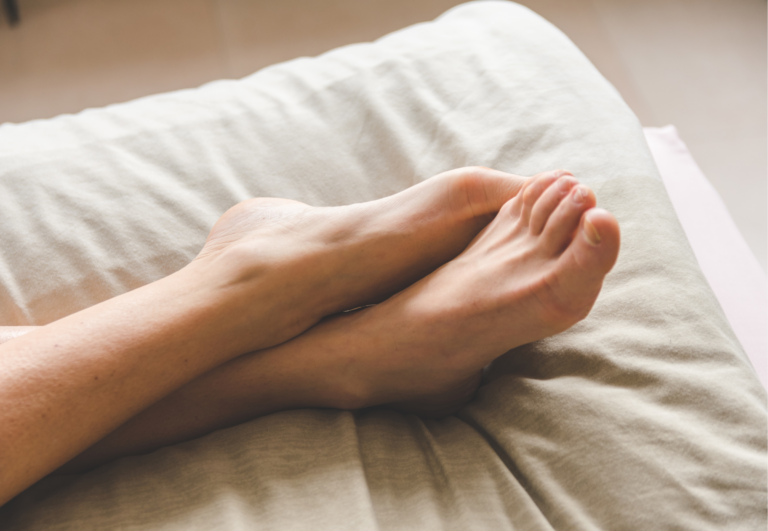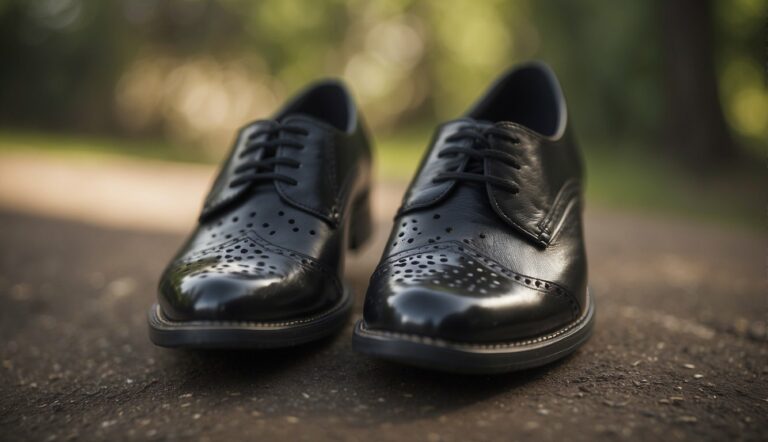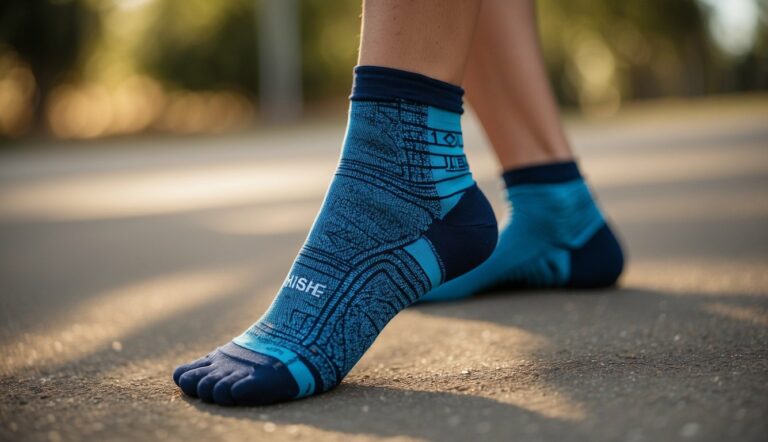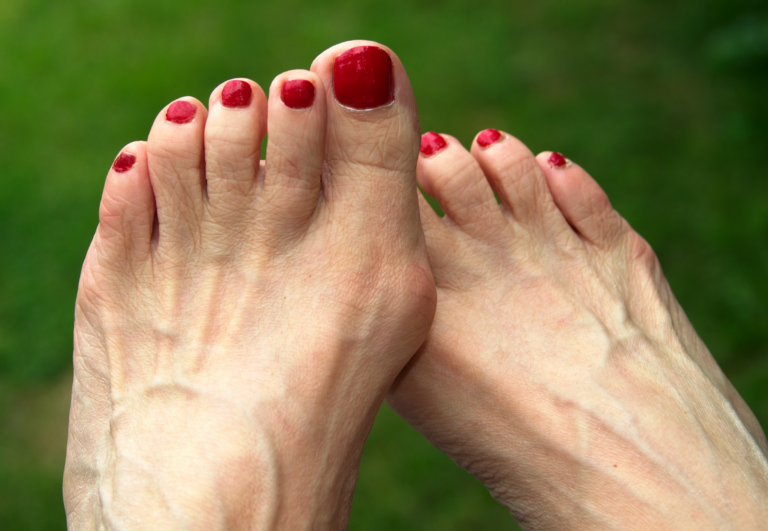How to Use Toe Spacers for Foot Fatigue Relief: A Step-by-Step Guide
Toe spacers are simple yet effective tools for those seeking relief from foot fatigue and discomfort. As a regular user of toe spacers, I’ve experienced firsthand how they can alleviate foot pain by promoting proper toe alignment. Wearing toe spacers can particularly benefit those who often stand for extended periods or routinely wear tight shoes that cram the toes together.
The consistent use of toe spacers may contribute to better foot health by mitigating the stress on the forefoot. This small change in your daily routine has the potential to improve comfort significantly, making them a worthwhile investment for anyone struggling with sore and tired feet. It’s about giving your toes the space to breathe and the support they need to carry your body’s weight effectively.
With proper application, toe spacers can be a low-effort step towards enhancing your overall foot health. They’re designed to fit comfortably between the toes, gently stretching and realigning them, which can help in reducing the pressure that contributes to foot fatigue. My experience suggests that integrating toe spacers into your foot care practices can make a noticeable difference in the levels of comfort throughout the day.
Foot Fatigue and Toe Spacers – What’s the Link?
Foot fatigue can be a daily challenge, often a result of prolonged standing or walking. Alleviating this discomfort is where toe spacers can be particularly effective, optimizing foot health and comfort through better alignment and balance.
Toe spacers can play a role in addressing foot fatigue by promoting proper alignment of the toes. When toes are properly aligned, this can lead to improved weight distribution across the foot, which may help to alleviate undue stress on certain areas that often lead to fatigue. Here’s the link between toe spacers and foot fatigue:
- Toe Alignment: Toe spacers help in spreading the toes to their natural position, which can reduce pressure on the joints and muscles of the foot.
- Muscle Function: By aligning the toes, toe spacers can enhance the function of foot muscles, potentially leading to more efficient muscle use and less fatigue during activities.
- Circulation: Separating the toes can also improve circulation in the feet, which is beneficial for overall foot health and can help in reducing fatigue.
- Balance and Stability: Proper toe alignment can improve balance and stability, which may reduce the effort required from the foot muscles to maintain posture and movement, thus reducing fatigue.
- Footwear Fit: Toe spacers can also help in creating a more anatomically correct shape for the foot, which can improve the fit of footwear and reduce the likelihood of foot fatigue caused by tight or ill-fitting shoes.
Anatomy of Foot Fatigue
Foot fatigue arises when the muscles and joints of the foot are overused or stressed, which can lead to pain and discomfort. This is often caused by lack of support, compromised toe alignment, and reduced circulation. The toes play a fundamental role in maintaining balance and supporting the body’s weight, so when they’re not properly aligned, it can impact overall foot health.

Potential Benefits of Using Toe Spacers for Foot Fatigue
Toe spacers assist in restoring natural toe alignment, which can improve balance and reduce pain. By creating space between the toes, they help to relieve pressure on joints, enhance circulation, and promote better muscle function.
They are a simple yet effective tool for enhancing foot comfort and providing pain relief, especially for those who experience foot fatigue regularly. These benefits not only support foot health but can also indirectly improve overall body posture and comfort.
Proper Usage of Toe Spacers for Foot Fatigue
Using toe spacers effectively can aid in realigning the toes, enhancing foot flexibility, and assisting in the recovery and prevention of foot fatigue. Here, I’ll share how to apply toe spacers, how often to wear them, and ways to incorporate them into your daily routine.
Step-by-Step Application
- Clean your feet and toe spacers: Ensure both are free from dirt and oils to prevent slipping.
- Sit comfortably: Start in a seated position with your feet flat on the floor.
- Begin with your big toe: Insert the spacer between your big toe and second toe.
- Insert carefully: Continue placing the spacers between each toe, adjusting for comfort.
- Check for alignment: Ensure spacers sit snugly against the skin and that toes are spread evenly.
Duration and Frequency
- Start gradually: Begin with 15-20 minutes and gradually increase wear time.
- Daily usage: Aim to wear toe spacers for a few hours each day to maximize benefits.
- Listen to your body: If you feel discomfort, reduce the wear time accordingly.
Incorporating into Your Routine
- Utilize toe spacers during relaxation or low-impact activities such as reading or watching TV.
- Combine with foot exercises and stretching to promote toe mobility.
- Wear spacers as part of your pre-training routine to prepare feet for physical activity.
Exercises and Strengthening
Using toe spacers is just the start; incorporating exercises and strengthening can significantly enhance foot muscle strength and improve balance. My experience shows that proper training with toe spacers can lead to better posture, stability, and overall foot health.
Exercises to Enhance Benefits
Toe Flexing and Stretching: Begin by sitting comfortably with the toe spacers in place. Slowly flex your toes downward and then stretch them upward. Hold each position for 5 seconds. Aim to do three sets of 10 repetitions. This basic exercise enhances toe muscle flexibility and can be done daily.
Toe Splaying: With toe spacers on, make an effort to spread your toes apart without using your hands. Hold the splay for 5 seconds and then relax. Perform three sets of 10 repetitions to improve the intrinsic muscles for better stability.
Strengthening the Foot Muscles
Towel Curls: Place a towel flat on the floor and use your toes to scrunch it toward you. Try three sets of 15 curls per foot. These curls train the muscles under your feet, increasing strength and contributing to improve gait during walking and running.
Walking Exercises: Walking barefoot with toe spacers can help improve posture and balance. I recommend short 5-minute walks to allow your feet to adapt. Gradually increase the time as your muscles strengthen. This simple activity can condition your foot muscles, enhance stability, and can be integrated into your daily fitness routine for recovery and strengthening.
Remember to listen to your body and progress at a comfortable pace. Optimal results come from consistent practice and gradual increases in exercise difficulty.
When to Consult a Professional
When foot fatigue persists despite the use of toe spacers, or if you suspect a more serious underlying condition, seeking advice from a healthcare professional is essential. They can assess your specific situation and provide a treatment plan suited to your needs.
Identifying Serious Foot Issues
If you’re experiencing signs of serious foot issues, such as persistent pain, inflammation, or deformities like hallux valgus (bunion), it’s imperative to consult a podiatrist. My advice hinges on the belief that catching conditions early, such as arthritis or diabetes-related foot complications, can make a significant difference in treatment outcomes.
- Common signs to watch for:
- Severe or unrelenting pain
- Swelling that does not improve with rest or elevation
- Signs of infection, such as redness or warmth
- Changes in the shape of your feet (like bunions or hammertoes)
- Difficulty walking or completing normal daily tasks due to foot discomfort
Pre- and Post-Surgical Use
If you’re facing a situation where surgery is recommended by a healthcare professional, pre-surgical and post-surgical care will likely be part of your recovery process.
Toe spacers can be one facet of that plan, particularly in surgeries addressing ligament, tendon, or biomechanical issues. It’s crucial to follow the prescribed treatment plan from your healthcare provider to ensure proper recovery and avoid exacerbating any issues.
- Best practices for pre- and post-surgical care:
- Before Surgery:
- Usage might be advised by a healthcare professional to prepare the foot for surgical intervention.
- Ensure to align the use of toe spacers with the recommended treatment plan.
- After Surgery:
- A critical part of rehabilitation to maintain toe alignment and spacing.
- Careful reintroduction of toe spacers must be under the guidance of your healthcare professional to support healing.
- Before Surgery:
Selecting the Right Toe Spacers
Finding toe spacers that alleviate foot fatigue isn’t just about picking any pair off the shelf. It’s critical to consider the material, size, and type that align with your specific needs.
Material Considerations
Materials matter when it comes to toe spacers. Here’s a quick breakdown:
- Silicone: Offers a softer, more flexible fit, making it a great all-rounder. Silicone spacers can adapt to the contours of your feet, providing comfort without sacrificing durability.
- Gel: Gel toe separators like the popular R ROOCKE Gel Toe Separators are known for their cushioning properties. They’re typically gentle and can be useful for first-time users looking for a softer touch.
- Foam: Lightweight and less durable, foam may not provide as much separation but can be comfortable for short durations or lighter issues.
Sizing and Fit
Proper sizing is crucial for toe spacers to be effective. They should fit comfortably between your toes without causing additional pressure. Here’s what to keep in mind:
- Correct Toes toe spacers and Yoga Toes gems often come in multiple sizes, which is helpful since one size does not fit all when it comes to toe spacers.
- Check for specific sizing guidelines from manufacturers.
- Ensure the toe spacers are snug but not overly tight.
Different Types for Specific Conditions
The type of toe spacer needed often depends on the foot condition. Here’s a targeted approach:
- Bunions: Look for spacers designed to provide a wider separation, like those offered by Correct Toes, to help realign the big toe.
- Hammertoes and Corns: Smaller, more intricate spacers can provide relief by preventing toes from overlapping.
- Calluses: Broad and soft separators like the MIND BODHI Toe Separators can reduce pressure and friction.
Table of Foot Conditions and Recommended Spacer Types:
| Condition | Recommended Spacer Type |
|---|---|
| Bunions | Wide separation models |
| Hammertoes | Intricate, smaller spacers |
| Corns | Individual toe loops or caps |
| Calluses | Broad, cushioned separators |
Always consider the specific needs of your feet when selecting toe spacers to ensure the best results for foot fatigue relief.





